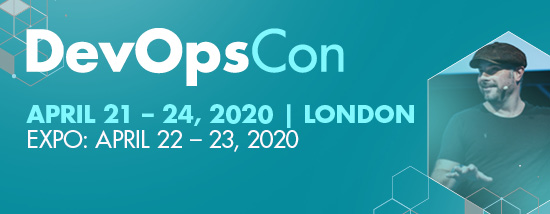GraphQL has thoroughly captivated the API world, due in no small part to its uniquely expressive API query language. But using it type-safely from Java poses a challenge, as language barriers tend to do. Fortunately, the GraphQL Manifold eliminates the language divide granting Java with comprehensive GraphQL fluency. Here Scott McKinney demonstrates how this pioneering framework can boost your productivity with seamless, type-safe GraphQL support.
Preview
Here’s a quick screencast to give you a sense of how it all works. The article covers what’s happening here, but watch closely. Notice the .graphql schema and query files are used directly from Java. You can type-safely use queries without engaging code generation steps, without maintaining POJOs, and without compiling between GraphQL changes. Perhaps equally impressive is the high level of integration available in the IDE – you can navigate from Java types and methods directly to and from corresponding definitions in GraphQL files. You can deterministically search and refactor usages as well. In essence with Manifold your Java project speaks fluent GraphQL to deliver a truly seamless developer experience.
Note although the preview demonstrates some features specific to the Manifold plugin for IntelliJ IDEA, you can still use Manifold without it; Manifold fully supports GraphQL as well as other schemas as a standard Java compiler plugin.
SEE ALSO: How to develop GraphQL frontends with Angular and React
Setting Up a Client
I’m going to use Manifold’s sample GraphQL application for this article, but in general you can follow these simple steps to setup any project and configure your development environment for GraphQL with Manifold.
-
Configure your build to use the Manifold libraries
Configure your project to use Manifold using the GraphQL setup instructions. It’s a simple matter of adding the manifold-graphql dependency to your build and adding the Manifold plugin argument to javac. If you are using Maven or Gradle, you can cut and paste what you need from the examples.
-
Install plugins to maximize your productivity
While it’s possible to use Manifold without an IDE, you’ll get the most out of it using the Manifold plugin for IntelliJ IDEA. You can install it free directly from the IntelliJ plugin settings UI. If you don’t already have IntelliJ installed, you can download it free.
While you’re at it install the JS GraphQL plugin too. It provides solid GraphQL editing support and the Manifold plugin pairs exceptionally well with it. Personally, I don’t leave home without it.
-
Obtain a GraphQL schema
A standard GraphQL schema file defines the API you’ll use in your client. By convention this file is named schema.graphql and can be obtained using an introspection query against the GraphQL server endpoint. There are command line tools available for this, but do yourself a favor and install the JS GraphQL plugin for IntelliJ and configure it to maintain your schema files for you. It truly is a brilliant plugin.
The GraphQL Sample Application
Manifold’s sample GraphQL application provides a simple movie service to query for movies and write reviews. For demo purposes it’s backed by a simple in-memory data structure. The project includes both a client and server and also provides a schema file, movies.graphql. This article’s focus is the client side.
Clone the app to follow along:
git clone https://github.com/manifold-systems/manifold-sample-graphql-app.git
Alternatively, you can open the project directly from IntelliJ:
File ➜ New ➜ Project from version control ➜ Git: https://github.com/manifold-systems/manifold-sample-graphql-app.git
Note the sample application uses Java 11, be sure to set up your environment accordingly.
See the readme file for complete information.
Writing and Using Queries
Once you have a client application set up and a GraphQL schema to query, you can begin writing and using queries. You write GraphQL queries directly with standard .graphql resource files. Here’s the query from the preview above:
query MoviesQuery($title: String, $genre: Genre) {
movies(title: $title, genre: $genre) {
title
genre
releaseDate
starring {
... on Actor {
name
}
}
}
}
It resides in the queries.graphql file in the resource directory. All the queries in the file are directly and type-safely accessible to Java using the qualified name of the file, as if it were a Java class. For example, access the MoviesQuery by name as a Java type like this:
import graphql.queries.MoviesQuery;
Note you can use any names you like for resource directories and query files e.g., the graphql directory is a chosen name for this demo.
You can create a MoviesQuery using a convenient builder pattern:
var query = MoviesQuery.builder() .withGenre(Action) .build();
The parameters on the builder method reflect required (non-null) parameters from MoviesQuery defined in the queries.graphql file. Thus since MoviesQuery does not specify any non-null parameters (using the ! operator) the builder method has an empty parameter list. Optional (nullable) parameters are configured using withXxx() methods such as withGenre() for the nullable $genre parameter.
As with query definitions the GraphQL enum definition in the movies.graphql schema maps directly to the Action Java enum constant, so you can statically import it like this:
import static graphql.movies.Genre.Action;
In the same way, Manifold maps the entire schema directly into Java’s type system – types, inputs, interfaces, enums, unions, queries, mutations, etc. are all type-safely accessible from Java. Importantly there are no code generation build steps involved, no POJOs to maintain, and no compilation required between GraphQL changes. Instead Manifold plugs into the Java compiler to make it all happen as if by magic. As the preview above demonstrates you simply drop a schema file into your project and begin coding against it.
You can easily execute a query against a server endpoint using an HTTP POST request and receive results.
var result = query.request("http://localhost:4567/graphql").post();
Here, the sample GraphQL app server runs locally on port 4567 and handles the graphql endpoint. Notice the request API is conveniently built directly into the query model.
Note, the examples leverage type inference using the var keyword provided with Java 11. You can also specify the types explicitly if you prefer.
With the query results in hand you can type-safely process them.
for (var actionMovie: result.getMovies()) {
out.println(
"Title: " + actionMovie.getTitle() + "n" +
"Genre: " + actionMovie.getGenre()} + "n" +
"Year: " + actionMovie.getReleaseDate().getYear() + "n" +
"Starring: " + actionMovie.getStarring().getName() );
}
Using Mutations
GraphQL mutations look and behave the same as queries. Here’s the ReviewMutation used in MovieClient.java from the sample application, it’s defined in the queries.graphql file.
mutation ReviewMutation($movieId: ID!, $review: ReviewInput!) {
createReview(movieId: $movieId, review: $review) {
id
stars
comment
}
}
Mutations usually entail a three step process.
- Query for information to identify the object to update, typically you query for an ID
- Create an input object with the new and/or changed information
- Create and post the mutation object parameterized with your ID and input object
You can glean this process upon inspection of the ReviewMutation type. The createReview member is parameterized with the ID of the movie to review and the ReviewInput type containing the star rating and an optional comment.
Following the sample app you can see how to create a review for the movie “Le Mans”.
First, find the movie “Le Mans”.
// Find the movie to review ("Le Mans")
var movie = MovieQuery.builder()
.withTitle("Le Mans").build()
.request(ENDPOINT).post()
.getMovies().first();
Next create a review for “Le Mans” using the ReviewInput defined the movies.graphql schema file.
input ReviewInput {
stars: Int!
comment: String
}
You use input objects the same way you use query objects. Here we make a ReviewInput using the builder() method. In this case since the stars property is non-null, the builder method exposes it as a non-null parameter, making it a required property. The comment property is nullable, hence the usage of the optional withComment() method.
var review = ReviewInput.builder(5)
.withComment("Topnotch racing film.")
.build();
Having built the ReviewInput, the next step involves passing it along in a ReviewMutation, again using a builder() method. Since ID and review are defined as non-null parameters to the mutation definition, the builder() method reflects them as required parameters.
var mutation = ReviewMutation.builder(movie.getId(), review).build();
Just as with a query you invoke the mutation using an HTTP POST request.
var createdReview = mutation.request(ENDPOINT).post().getCreateReview();
The post returns the resulting Review object you can type-safely process.
out.println(
"Review for: ${movie.getTitle()}n" +
"Stars: ${createdReview.getStars()}n" +
"Comment: ${createdReview.getComment()}n"
);
Request Authentication
In practice a GraphQL client often needs to specify some form of user authentication when making requests to protected resources. By convention this is handled using the Authorization HTTP header. Manifold makes this easy with Request API methods such as withBearerAuthorization().
var result = query.request("https://api.github.com/graphql")
.withBearerAuthorization("XXXXXXXXXXXXXXXXXXXXXXXXXXXXXXXXXXXXXXXX")
.post();
This example demonstrates how you can configure a request with a security token using the Bearer authentication scheme. Note Bearer authentication should only be used over HTTPS (SSL).
SEE ALSO: No more n+1 problems with FaunaDB’s GraphQL API
Embedding Queries
If you like to experiment with bleeding edge technology, have a look at Manifold fragments. This new experimental feature lets you embed resources directly and type-safely into your Java source. It is particularly effective for single-use GraphQL queries where you edit and maintain a query definition closer to where it is used in code.
It’s pretty simple. You embed a query definition in a comment like this:

The [>MyQuery.graphql<] tag tells Java this is an embedded fragment of resource type graphql with name MyQuery, as if it were defined in a resource file of the same name. As such, you reference the fragment by its declared name, MyQuery.
Of particular importance is fragment type-safety. Fragments are statically typed, which allows the compiler to verify code that uses them. As the code snippet illustrates with the IDE plugin you not only have code completion etc. in your Java code, but you also have rich editing capabilities within the fragment itself!
As with other Manifold features, you don’t need IntellIJ to use fragments because Manifold works directly with the Java Compiler as a plugin. As such, you can use text editors or other IDEs of your preference. However, as you can imagine your productivity with these features enabled in IntelliJ can vastly improve your overall dev experience.
New Life
An API for APIs. That’s essentially what GraphQL is. In hindsight it’s the obvious remedy to maintenance and performance ailments plaguing service providers – a declarative language enabling service consumers to precisely structure the information they need. And, importantly, to do it all type-safely.
As more service providers embrace GraphQL, pressures mount for a solid Java solution particularly on the client. Here I’ve demonstrated how the GraphQL Manifold reaches beyond expectations to provide truly seamless, type-safe GraphQL access from Java. Indeed, its extraordinary metaprogramming faculties afford a level of flexibility normally reserved for dynamic languages such as Javascript. Most importantly, these capabilities exist statically when and where you need them most: while you’re writing code in your IDE! As a consequence GraphQL feels light, connected, and approachable.
I’m hopeful to have piqued your interest and that you’ll dig a little deeper into the GraphQL Manifold. Thanks for reading!
The post GraphQL Made Easy appeared first on JAXenter.
Source : JAXenter














